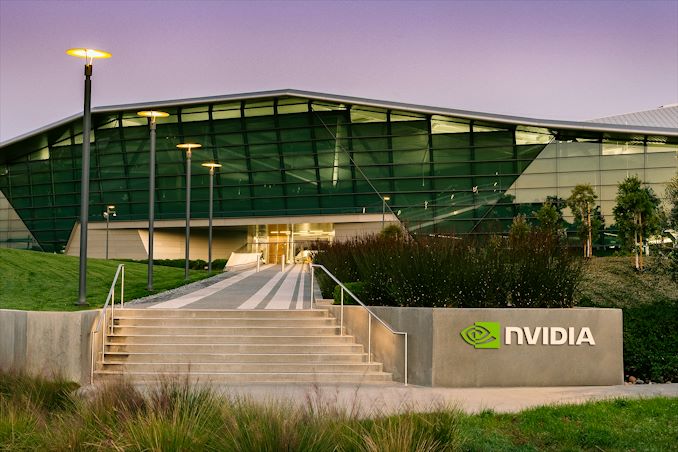
With its highly successful A100 and H100 processors for artificial intelligence (AI) and high-performance computing (HPC) applications, NVIDIA dominates AI datacenter deployments these days. But among large cloud service providers as well as emerging devices like software defined vehicles (SDVs) there is a global trend towards custom silicon. And, according to a report from Reuters, NVIDIA is putting together a new business unit to take on the custom chip market.
The new business unit will reportedly be led by vice president Dina McKinney, who has a wealth of experience from working at AMD, Marvell, and Qualcomm. The new division aims to address a wide range of sectors including automotive, gaming consoles, data centers, telecom, and others that could benefit from tailored silicon solutions. Although NVIDIA has not officially acknowledged the creation of this division, McKinney’s LinkedIn profile as VP of Silicon Engineering reveals her involvement in developing silicon for 'cloud, 5G, gaming, and automotive,' hinting at the broad scope of her alleged business division.
Nine unofficial sources across the industry confirmed to Reuters the existence of the division, but NVIDIA has remained tight-lipped, only discussing its 2022 announcement regarding implementation of its networking technologies into third-party solutions. According to Reuters, NVIDIA has initiated discussions with leading tech companies, including Amazon, Meta, Microsoft, Google, and OpenAI, to investigate the potential for developing custom chips. This hints that NVIDIA intends to extend its offerings beyond the conventional off-the-shelf datacenter and gaming products, embracing the growing trend towards customized silicon solutions.
While using NVIDIA's A100 and H100 processors for AI and high-performance computing (HPC) instances, major cloud service providers (CSPs) like Amazon Web Services, Google, and Microsoft are also advancing their custom processors to meet specific AI and general computing needs. This strategy enables them to cut costs as well as tailor capabilities and power consumption of their hardware to their particular needs. As a result, while NVIDIA's AI and HPC GPUs remain indispensable for many applications, an increasing portion of workloads now run on custom-designed silicon, which means lost business opportunities for NVIDIA. This shift towards bespoke silicon solutions is widespread and the market is expanding quickly. Essentially, instead of fighting custom silicon trend, NVIDIA wants to join it.
Meanwhile, analysts are painting the possibility of an even bigger picture. Well-known GPU industry observer Jon Peddie Research notes that they believe that NVIDIA may be interested in addressing not only CSPs with datacenter offerings, but also consumer market due to huge volumes.
"NVIDIA made their loyal fan base in the consumer market which enabled them to establish the brand and develop ever more powerful processors that could then be used as compute accelerators," said JPR's president Jon Peddie. "But the company has made its fortune in the deep-pocked datacenter market where mission-critical projects see the cost of silicon as trivial to the overall objective. The consumer side gives NVIDIA the economy of scale so they can apply enormous resources to developing chips and the software infrastructure around those chips. It is not just CUDA, but a vast library of software tools and libraries."
Back in mid-2010s NVIDIA tried to address smartphones and tablets with its Tegra SoCs, but without much success. However, the company managed to secure a spot in supplying the application processor for the highly-successful Nintendo Switch console, and certainly would like expand this business. The consumer business allows NVIDIA to design a chip and then sell it to one client for many years without changing its design, amortizing the high costs of development over many millions of chips.
"NVIDIA is of course interested in expanding its footprint in consoles – right now they are supplying the biggest selling console supplier, and are calling on Microsoft and Sony every week to try and get back in," Peddie said. "NVIDIA was in the first Xbox, and in PlayStation 3. But AMD has a cost-performance advantage with their APUs, which NVIDIA hopes to match with Grace. And since Windows runs on Arm, NVIDIA has a shot at Microsoft. Sony's custom OS would not be much of a challenge for NVIDIA."







